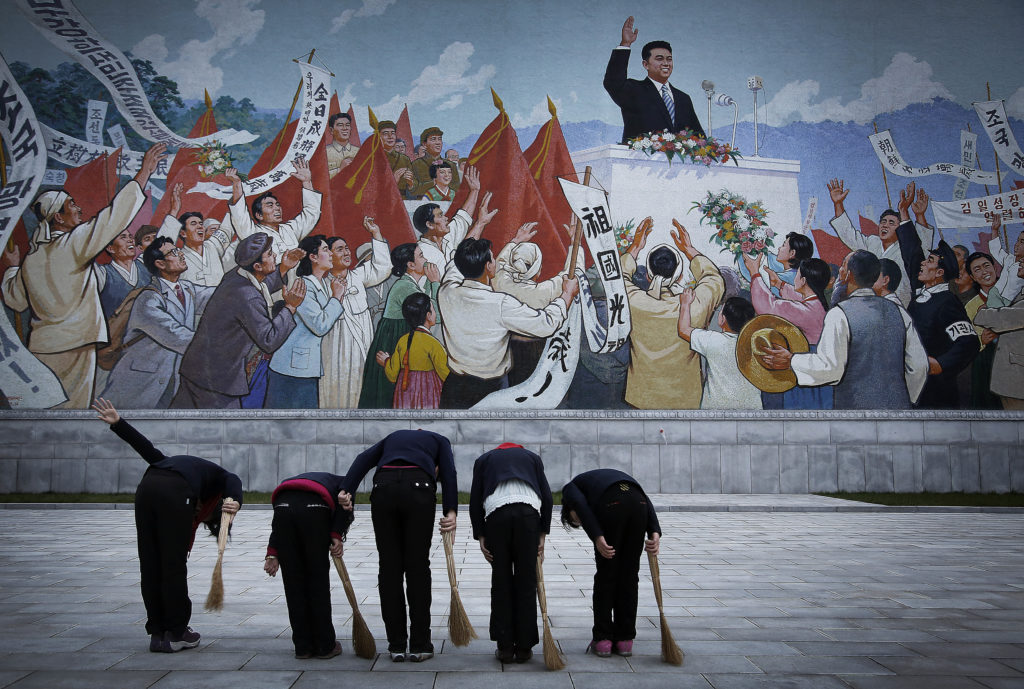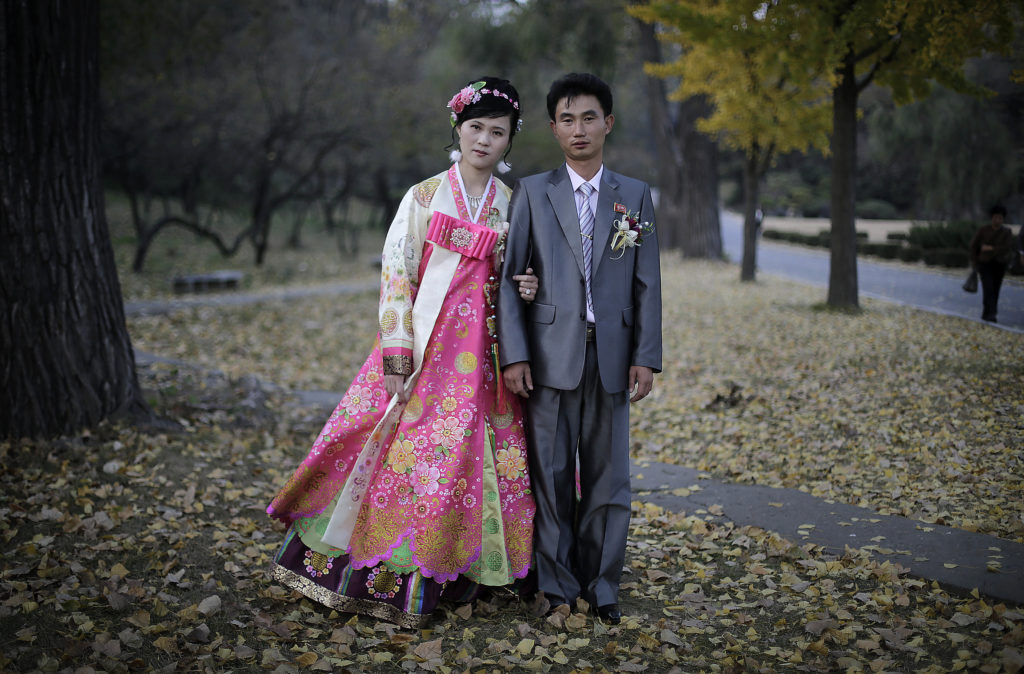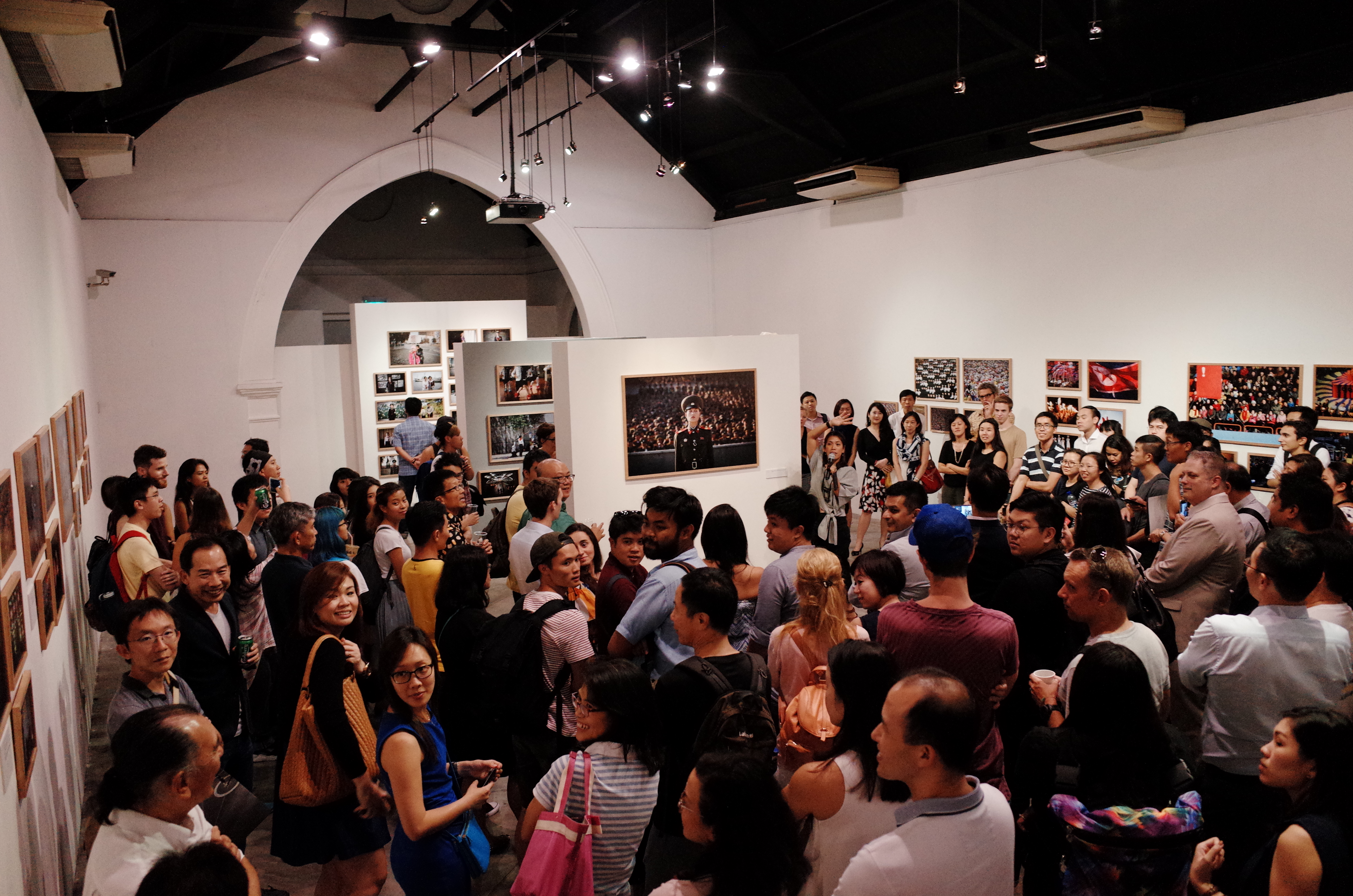An artist talk by Associated Press photojournalist Wong Maye-E
Wong Maye-E has been wire agency The Associated Press’s lead photographer for North Korea since 2014. She is based in Singapore and spends about ten days a month in North Korea, working with her AP colleagues to document news and everyday life in the reclusive country.
Maye-E spoke about her work to a curious audience at a public talk held in conjunction with North of the DMZ, an exhibition of her photographs at Objectifs in Sep-Oct 2016. We share some of the highlights of her artist talk here.
Since 2013, Wong Maye-E has been capturing both public spectacles and daily life in North Korea as an AP photographer. Her photographs of official monuments and tightly choreographed parades convey the country’s “pride in presenting perfection” and are very much in line with global perceptions of the republic’s reputation for regimentation and propaganda. It is not surprising that such scenes make for “nice compositions” that attract a photographer’s eye, but Maye-E has a knack for differentiating her images with details that depict gentle departures from the order.
In one such photograph, a group of uniformed men is facing away from the camera, looking at the country’s leader. Their hats’ flat, round surfaces reminded her of coins. The repeated pattern interested her. Suddenly, one man turned to face the camera, and she clicked, knowing not only that it would “hold the picture” but that she’d managed to get “something different than the fifty of us [photographers] standing next to each other”. “It was deliberate, planned!” she joked during her talk, before acknowledging that such situations can only be, more accurately, “anticipated” with years of experience.
In North Korea, the photojournalist credo “shoot first and ask permission later” doesn’t work. Maye-E shared that the AP staff’s visits are highly controlled. Before each visit, they must submit a request listing where and what they want to shoot. “If you request to shoot A, B, C, you’ll more likely end up getting A, and maybe Z and Y,” she said. They are accompanied everywhere by guides who point out what is off limits and discourage casual conversations with locals, who are themselves guarded, especially around foreigners with cameras and who are associated with an American company. “As tourists, you’d probably get more access in North Korea than me as a journalist,” she told the audience.
“I try not to repeat the pictures I get,” Maye-E said, “but you always take the same route, stay in the same hotel, get the same view from your window…” This pushes her to try to shoot differently: “sometimes you try, you know, shoot from the front, back, pan, pan slower, shoot silhouettes”. She acknowledged that she feels both pressure to deliver images because “access is so rare and everyone is waiting for your pictures” and a sense of responsibility to depict the country fairly, “in as objective and honest a way as I can”.

School girls bow before a mural which shows the late North Korean leader Kim Il Sung to pay their respects, before sweeping the surrounding areal (Dec 2015). AP Photo/Wong Maye-E
Maye-E does not always have the “luxury of shooting in exotic places” while in North Korea. She shared: “When I am there I lose all sense of time and routine. Time passes very fast or very slowly. You are waiting for something, but you don’t know what. We very seldom get what we want immediately.”
When she was new to the country, she was not always able to discern what around her was orchestrated and what was more authentic. “Sometimes in the beginning you’re not so privy to it.” With experience, she has learned to “see through it or beyond it” and has built a degree of trust with their guides, though she says it is “sparing”. “There is an understanding. You come to understand what is a sensitive topic, what you should and shouldn’t do. They also know you know where the no-go zones are.” She points out that this is not entirely unique to North Korea. “In any country, you play by the rules. Some rules are just different than others.”
Maye-E “likes to show faces” as they humanise depictions of the country. From her series of posed portraits, where her subjects often appear serious and impassive, to street scenes, where she captures people in less guarded moments, her images capture a wide spectrum of North Koreans going about their daily lives. And her photographs of children positively brim with energy and playfulness. “Children are children everywhere”, she says. They are often curious about her cameras and about her colleagues who are not Asian. On her first visit to North Korea, in 2013, it was the sight of happy kids rollerblading in a public square that immediately prompted her to check her own assumptions about the country. Their actions, gestures and settings are relatable beyond just North Korea.

A bride and groom, Ri Ok Ran and Kang Sung Jin, at Moranbong hill where they were taking wedding pictures. (Oct 2014). AP Photo/Wong Maye-E
Despite her friendly personality, her efforts to learn the local language and her talent for capturing the decisive moment, Maye-E is realistic about the extent of her relationship with the citizens of the country she has been documenting for the last three years. In-depth conversations or friendships with ordinary locals is difficult. “I can reach out to them but I can only reach so far,” she says. Yet, as her knowledge of even North Korean women’s style and skincare regimens, and her thoughts on what it reveals about their “pride in presenting perfection” suggest, her persisting curiosity and playful eye positions her well to look deeper, and reach further as she continues to document this fascinating country.


